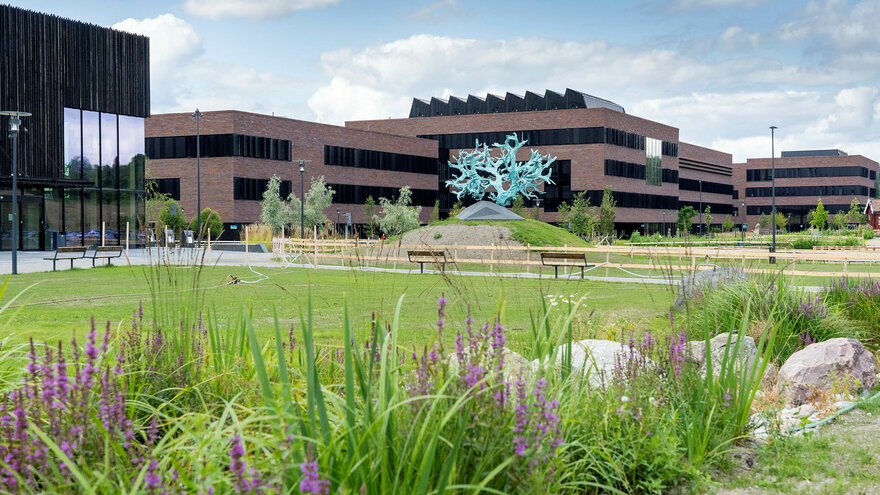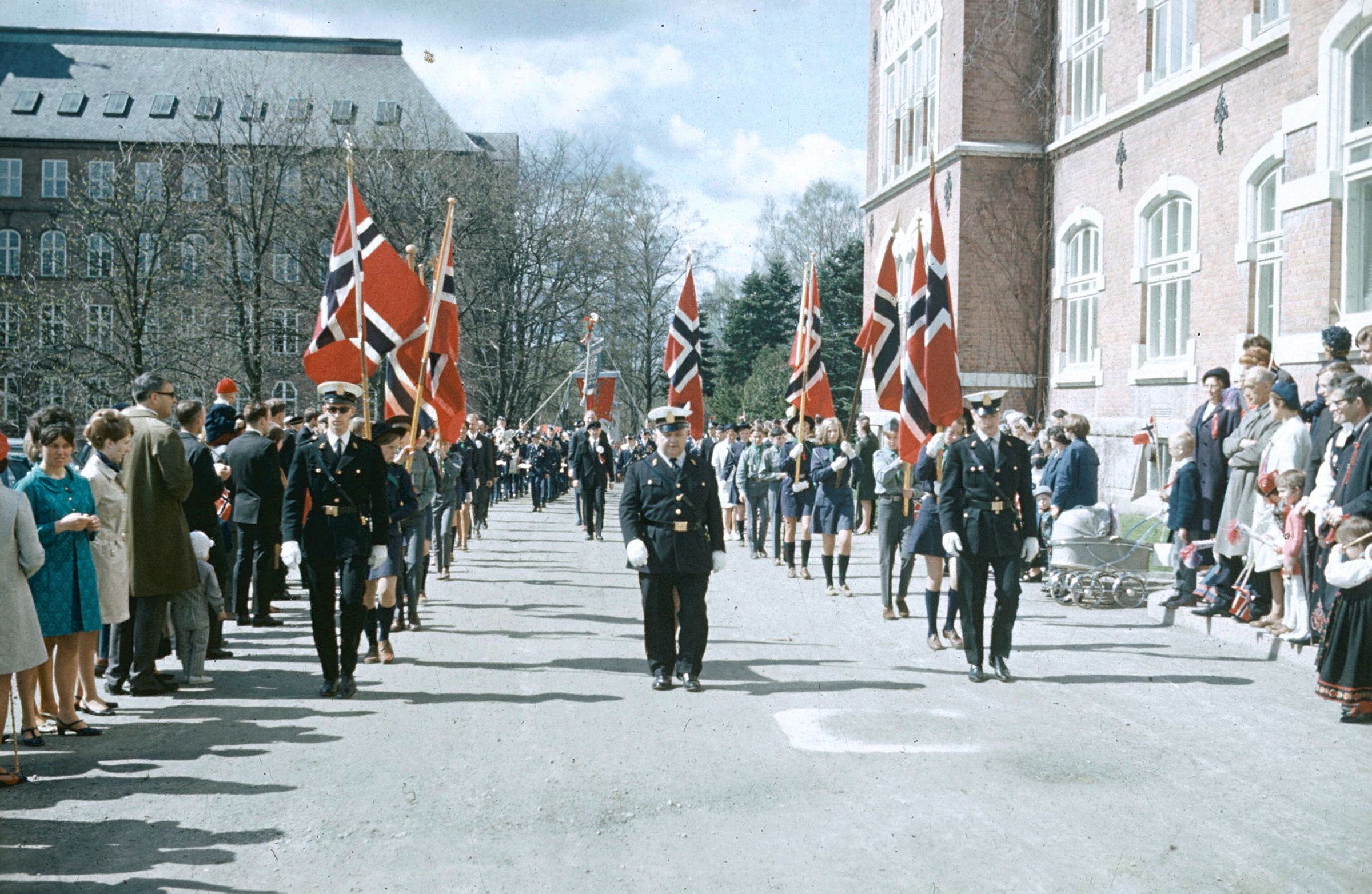It all began in 1814. Christian Magnus Falsen sat in the magistrate’s court Vollebekk and drafted the Norwegian constitution.
Sorenskrivergården is located directly below where the Falsen monument is located in the university park today. Norway was in the process of building its own nation. An important point was to increase access to food. In the middle of the 19th century, each county therefore got agricultural schools.
– Now we need people who can teach agriculture, said the board and soon the Higher School of Agriculture in Ås saw the light of day. Ås personage and Vollebekk magistrates' farm were bought, 3,400 acres for 32,500 spesidaler (one spesidaler equals 4 NOK)
Architect P. H. Holterman was given the assignment, and Tunbygningene with farm buildings were laid out as a large farmyard in a rational and functional style, by the Swan Dam, ready for use in 1859. (The Swan Dam is now colloquially called Andedammen).
Studies
The student flow decreased rapidly, and changes had to be made.
We need food, the government said. We need to use the gardens. Then gardening became a study direction in 1887 and Bergstrøm, who taught gardening, established the park around Svanedammen and Tunet. It was built as a folk park, so people in Ås could use the space for recreation and walks. But this was not enough change, and the discussion went on.
– We need to have education in forestry and veterinary medicine, too. And when the time for “Norway as a nation on its own feet” approached, they had discussed several new study opportunities. There were to be trained farmers, gardeners, foresters, land transfer men and dairy workers. They needed more space and more to be built.
Architect Ole Sverre was tasked with drawing the expansion of Tunbygningene and new buildings such as Urbygningen, teachers' houses in dragon style, greenhouse complex and more. It was built from 1897 to 1901. A solid commitment for Norway and for the 31 employees and the 24 students who graduated two years later. One exception was the forest education, which was three years from its beginning.
Style and design
Ole Sverre connected styles, he moved from dragon style, through neo renaissance and to art nouveau and functionalism. Here in Ås you will find many examples of the variety of styles.
When Tårnbygningen was started in 1920, the park manager and head of gardening education, docent Olav Leif Moen, began to establish the neoclassical park around Storplenen. A facility that NMBU is working to get back to its former greatness.
Veterinary training
Veterinary education in Norway was involved in the discussion, also when it came to placement in Ås. Norway Veterinary College was eventually established at Adamstuen in Oslo. Architect Bredo Greve was commissioned to design the school building. The order was to show national monumentality. He was inspired by the Royal Veterinary and Landbohøj School in Copenhagen. We can recognize features of the Italian Renaissance in the distinctive and well-known buildings at Adamstuen in Oslo.
The Institute of Veterinary Medicine was established in conjunction with the Veterinarian College. The building of the Veterinary Institute was completed in 1914. Then the college bought land from Lindern farm and adjacent land in Ullevålsveien. 41 acres were now available for the college. War and tight times led to the establishment taking time and since architect Bredo Greve died during the process, the facility was completed by architect J. H. Sparre in 1935.
Merger of different types
The States’ Small Farmers’ School was established at Sem in Asker in 1914 and was in operation until 1962. The goal of the business was to educate teachers for small-scale farming schools and agricultural schools across the country. In 1962, it was merged with the Norwegian Agricultural School (NLH). This meant that the educational seminar was moved from Sem in Asker to NLH in 1963. This was the beginning of the teacher’s training in Ås. The biggest celebrity who contributed with fun and play at Sem was Alf Prøysen.
The Institute of beekeeping had some activity on Sem, in addition to that Sem guesthouse was conducting hotel business. The university sold the facility at Sem in 2013.
"Statens forsøksgård for småfeet" (The state's experimental farm for small cattle) at Sandnes was transferred to the Norwegian Veterinary College in 1989. NMBU is still active there.
In the 1990s, the start of engineering education was placed in Ås. This study area has had a strong growth in student numbers since the turn of the millennium.
In 2005, the Norwegian Agricultural University received university status and took the name University of Environmental and Biological Sciences. (UMB).
In 2008, it was time for further change discussions, it was decided that the Norwegian Veterinary College (NVH) and the University of Environment and Biosciences (UMB) would be merged into one university and gathered at Ås. The new university, the Norwegian University of Life Sciences (NMBU), was a fact from 2014.
New major national investment – the 2020s
In 2021, the veterinary education moved its activity from Oslo to Ås. Everything was almost ready when they put the new 80,000 m2 building into use. The squere meters includes attic, technical intermediate floors and the Veterinary Institute.
Rolf Erik Wahlstrøm was the architect, and he steered the process as strongly as previous architects have done here at Ås. There is high quality and great complexity in the building. It has a period-typical expression.
Uraksen, the area between Urbygningen and Veterinærbygningen, is 170 acres and stretches from the north side of Urbygningen to Nordskogen. At first the facility has a park feel, then it becomes more nature-like the closer you get to the forest. The idea of a people's park, which invites you to hikes and walks, is taken care of here as well. With this, the university gained a larger park, new art, a new farm facility and Europe's best facility for veterinary medicine education and research. The price tag was close to under 10 billion.
Once again, one of the nation's biggest investments in the sector was added to Ås.

